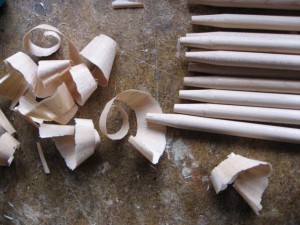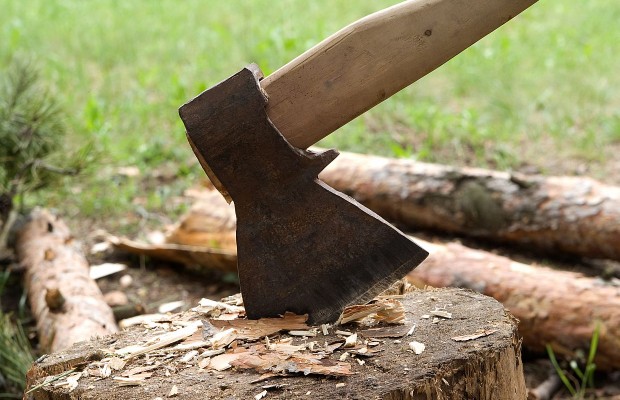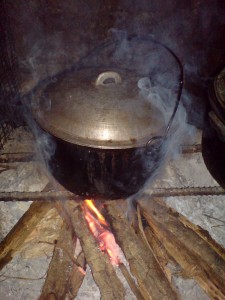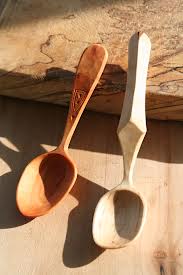In a post-SHTF world, it’s probable that you won’t have access to modern amenities such as electric or gas heat or stores from which to buy household goods or weapons. Fortunately, you’re probably surrounded by just what you need to heat your home, cook, and make your own goods – trees!
Each type of wood has different densities, textures, and grains that make it great for one use but not-so-great for others. Knowing the difference will give you the know-how to make your own goods after disaster, and will also become a skill that you can use to barter for things that you need.
Let’s talk about some trees that any prepper needs to know for survival and their uses.
Wood to Use for Burning
A good rule of thumb to finding the best woods for burning is to go with hardwoods. They burn longer and more consistently than softwoods, because the wood is dense. Also they don’t have dangerous sap or air pockets that can pop and start fires. Here is a list of good hardwoods:
Some of these are better than others for cooking, too. Mesquite and hickory give a nice, smoky flavor to food and can reduce your need for spices. Apple and cherry are both good for flavoring food but if you have a good apple or cherry tree, you don’t want to cut it down if it bears fruit for obvious reasons.
In a pinch you can use pine or other softwoods but they will burn faster, hotter, and will have often have the resin or gas pockets.
Burn carefully and make sure that you have a screen if using an open indoor fireplace. Clean your chimney thoroughly and regularly to prevent sap buildup that can start a chimney fire if you have no other option than using softwoods as a heat source.
A few tips for getting the most out of your firewood:
- Wet wood splits easier than dry wood.
- Split your wood so that it’s no bigger than 3-6 inches at its broadest width and short enough to fit in your burner with at least 3 inches to spare.
- Dry your wood thoroughly before burning. Wet wood has up to 50% moisture; it should have less than 25% moisture to burn efficiently. This can take several months.
- Ready-to-burn wood will make a hollow “thunk” when the pieces clank together and it will be relatively light in weight. The ends will be darkened.
- Burn as little pine as possible in fireplaces or indoor wood burners because of the sap.
Wood to Use for Carving
Just like wood for fires, some wood is better suited to carving than others. With the right wood, you can make plates, cups, bowls and basically any other vessel that you may need, along with forks and spoons. Because wood is porous, it may be best if everybody has their own utensils to avoid the spread of disease if you have no way to seal the wood.
Here are the best woods for carving with hand tools, because they’re non-toxic, relatively soft yet will hold form and aren’t as prone to split:
- Butternut hickory – great for carving but is prone to wormholes which may be a challenge for cups or vessels.
- Poplar
- Basswood
- Pine
- Cottonwood – easy to carve but has a tendency to split
- Grey Ash
Hardwoods such as mahogany and oak are great but are difficult to carve with hand tools. Make sure that your wood is seasoned (dried) before carving if possible.
Woods to Use for Survival Weapons
Guns are great but if you run out of bullets, you’re up the proverbial creek without a paddle. In that case, it’s a good idea to have a weapon on hand that you can make your own projectiles for, for both hunting and defense.
A bow is a great survival weapon for both scenarios, is light, and can be used by nearly everyone. Plus, you can make your own arrows, so as long as you have access to good wood, you won’t run out of ammo. The bow and the arrows require different types of wood, so here’s a list for each.
Wood Good for Bows
The primary characteristic that you need in wood that you’re going to use for a bow is flexibility, but not too much. Your bow has to be able to flex without breaking, but it also needs to be strong enough to provide the snap back that will give you the oomph needed to fire an arrow accurately and repeatedly.
- Bamboo – often called nature’s fiberglass. If you have access to bamboo, it makes excellent wood for bows.
- Osage Orange – this is considered by many to be the cream of the crop for bow-making but it isn’t readily available to everybody.
- Hickory – It has good flex, but is strong so it will need to be carved thin. Also, it may not have the durability that other woods do, but it’ll do in a pinch.
- Red Oak – Awesome bow material but make sure that you use a piece made from the thicker later growth rings, because the inner growth rings are more porous and therefore more brittle.
- Yew – This is right up there with Osage Orange. Excellent for making even longbows because of the strength and flexibility.
- Black Walnut
- Black Locust
Most fruit trees make good bows, too.
Wood Good for Arrows
You need to use wood that isn’t going to break or bow and that is neither too heavy nor too light. Here are some good suggestions:

- Cedar (preferably Port Orford but that’s hard to come by sometimes) – This is the cream of the crop in arrow wood. It’s light to moderate in weight and doesn’t bow easily. Some people really don’t like yellow cedar, so you may want to avoid that type.
- Douglas Fir – This wood is tough to get straight but if you do, it makes a great arrow. It’s heavier than cedar.
- Maple – Smooth and uniform in weight and texture, it may not be as durable as others but it has a nice combination of weight and strength.
- Ash – Nearly indestructible but heavy and slow. Still, not a horrible option.
- Poplar
- Birch
- Most Pines
You may see that there are some woods that fit in two or more categories such as maple, ash, and poplar. These may be ones that you want to stock up on because as we know, multi-purpose is the way to go. Wood can be used to fill many needs in addition to what we’ve discussed including making tools and building houses.
It’s one of the greatest natural resources that you will have, so you need to know your trees and what you can use them for in a crisis situation.
This article has been written by Theresa Crouse for Survivopedia.







